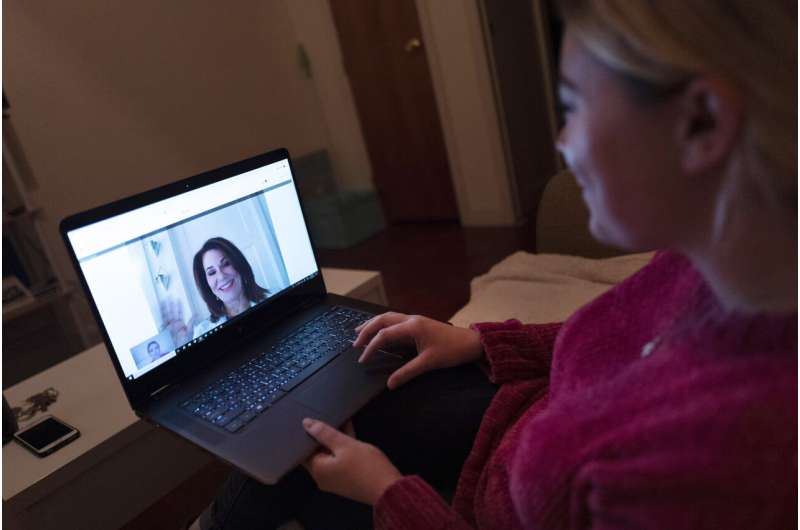This article has been reviewed according to Science X's editorial process and policies. Editors have highlighted the following attributes while ensuring the content's credibility:
fact-checked
reputable news agency
proofread
How to find the right balance between telemedicine and in-person care

Patients can now see an array of doctors without leaving their recliner thanks to telemedicine. But that doesn't mean trips to the office should end.
Finding the right balance between virtual and in-person visits can be a key to getting good care.
Here's what you need to know about which form of care may be right for you and when.
WHAT IS TELEMEDICINE?
This generally refers to diagnosing and treating patients remotely. It's often done over a secure video connection provided by the doctor's office. You can use your smartphone, tablet or computer.
But telemedicine also can involve telephone calls or trading secure messages with someone from your doctor's office to discuss test results or follow-up steps after an appointment.
It can be used to diagnose new health problems and monitor existing, long-term issues like diabetes.
WHAT'S THE BUZZ?
These virtual visits can save time and give patients more doctor choices. That's especially important for those who live where in-person care options are slim or for patients who can't take time off work to get to the doctor or lack transportation.
Telemedicine use exploded after COVID-19 hit in 2020. It has cooled since, but it remains more popular than it was before the pandemic, particularly in specialties like dermatology or mental health care.
Amazon now offers a telemedicine option in every state. And many companies sell subscription-based plans centered on virtual care. For those, patients pay a regular fee for doctor visits and mail-order prescriptions to treat high blood pressure, anxiety or hair loss, among other issues.
WHAT ARE THE KEYS TO A VALUABLE VISIT?
Test your phone or tablet before the visit starts. You will want to make sure both audio and video work properly. You may need time to adjust your device settings.
Make sure you're in a room or location that offers privacy, especially for therapy sessions. That's usually not a work cubicle, library or restaurant with public Wi-Fi.
Don't drive, walk or eat while talking to the doctor. Aside from being unsafe, those habits also can be distracting for both the patient and physician, noted Dr. Jay Lee, a family physician who does both in-person and virtual visits.
WHAT ARE THE LIMITS?
Telemedicine needs a secure, fast internet connection, and some patients or doctors may lack the technology to do a virtual visit.
Sometimes physical exams are necessary.
Someone seeking help for a urinary tract infection—which can be treated by telemedicine—might actually have gallbladder problems. That could require an ultrasound during an in-person visit, noted Lee, a board member with the American Academy of Family Physicians.
There also may be limits to receiving telemedicine from doctors outside your state. Pandemic emergency declarations that made this easier have ended.
That can make follow-up care challenging if a patient travels to see a specialist.
"There aren't that many pediatric specialists in all of the different conditions that can affect kids," said Krista Drobac, founder of the Alliance for Connected Care, which advocates for telemedicine use.
WHAT'S THE RIGHT BALANCE?
That can depend on the patient's comfort with telemedicine and the treatment they need.
In some cases, there is no balance if a patient lacks an in-person option or that visit is tough to schedule.
If possible, Lee recommends an initial visit in person and then telemedicine follow-ups. He says that first visit is important for any doctor or specialist you expect to see again.
Both the physician and patient need to determine whether they "have a vibe, that they can get along and that they can work together," he said.
© 2024 The Associated Press. All rights reserved. This material may not be published, broadcast, rewritten or redistributed without permission.





















